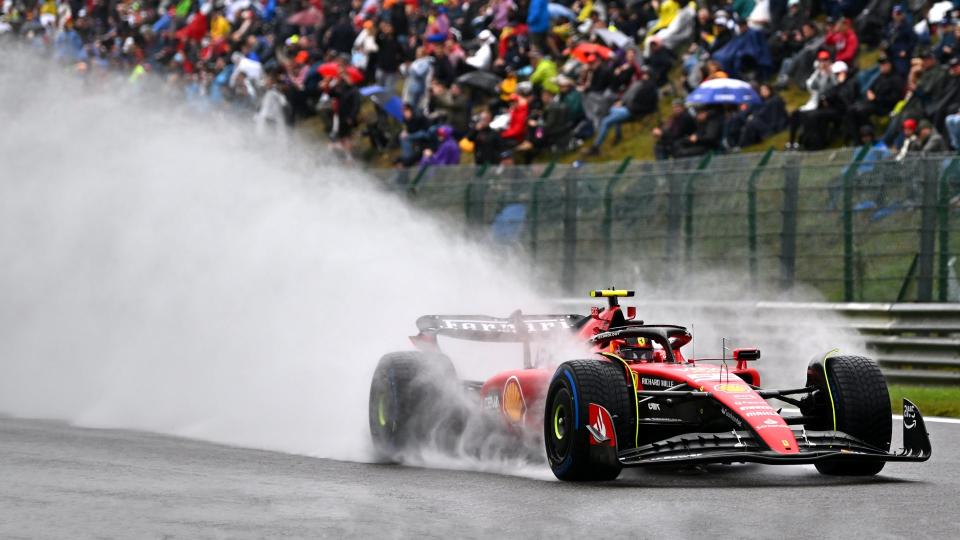F1's Wet Weather Problem Is Proving Tricky To Solve

Formula 1 has a rain problem. Or, indeed—multiple problems that all conspire to play havoc with a race weekend when too much water falls from the sky. Despite the best efforts from teams and the FIA alike, easy solutions are proving hard to find.
As covered by The Race, wet races were once celebrated by fans and drivers alike. They gave an opportunity for those with the most talent to shine, with more passing and on-track action almost a certainty in the old days. They also often served as an opportunity for lower teams to pick up a strong result with a capable driver and smart strategy choices. Today, though, a wet race more often than not means long red flag stoppages, delays, and farcical results like those at the 2021 Belgian Grand Prix.




The biggest problem these days is not one of grip, but visibility. In many cases, drivers can run safely on intermediate tires, with no need to switch to the more aggressive full wets. Despite ample grip and little risk of aquaplaning, the spray thrown up by the cars creates so much opaque grey mist that it's impossible to race safely. By the time visibility is good enough to race, conditions demand intermediates instead of full wets.
The FIA's efforts to solve this problem have thus far come to naught. A "Wet Weather Package" was trialed in testing after the 2023 British Grand Prix, consisting of a set of mudguard-like devices fitted to the wheels. The hope was that these devices could cut the spray by 50%. Sadly, they made "no tangible difference to visibility according to Nikolas Tombazis, the FIA's Single Seater Director.

Realistically, the visibility issue is unlikely to be solved with a simple guard fitted to the rear wheels. Part of the problem lies in the effect of the rear wing, diffuser, and underfloor aerodynamic elements on modern F1 cars. The aim of the latest F1 rules was to encourage passing by throwing the turbulent wake behind the car higher into the air, reducing the amount of "dirty air" for cars following behind. That airflow tends to throw a huge amount of spray up in the air, creating the impenetrable grey mist that makes racing impossible. Even if the spray coming off the wheels was reduced, it's possible the aerodynamic elements will still throw a significant mist into the air.
Sadly, it's not really possible to block that airflow in any way. Doing so would completely ruin the downforce created by the car's underfloor, and thus would be impractical. The huge updraft generated behind an F1 car is readily visible in the wet, thanks to the plumes of spray. The real-life flow visualization looks great and demonstrates why putting a few mudguards on F1 cars won't really solve the problem.


Pirelli is actively exploring the idea of a new grippier wet tire. It would be closer in lap time to the existing intermediate tire to bring the crossover between the two into a usable range. Presently, when the added grip and water-handling capacity of the wet tire are desired, visibility problems preclude racing at speed.
The recent sprint race at the Belgian Grand Prix demonstrated the problem well. The race began under the safety car, with all cars on the wet tires. The tires handled the standing water well, meaning aquaplaning wasn't a problem. However, visibility was too poor for green flag conditions. Once enough water had shifted, the race began in earnest, with all runners immediately shifting to intermediates as the wets were overheating and too slow at that point.
The visibility problem is unlikely to be solved any time soon. The aerodynamic fundamentals of F1 cars seem to preclude that. It seems perhaps unlikely that there is a window in which visibility is still clear, but the cars need a tire that can shift more water than the current intermediates. Here's hoping a solution can be found that brings us the joy of low-grip wet races without the grey-out that makes them unsafe to run.
Got a tip? Let the author know: lewin@thedrive.com

 Yahoo Autos
Yahoo Autos 